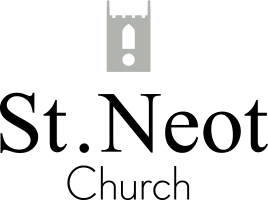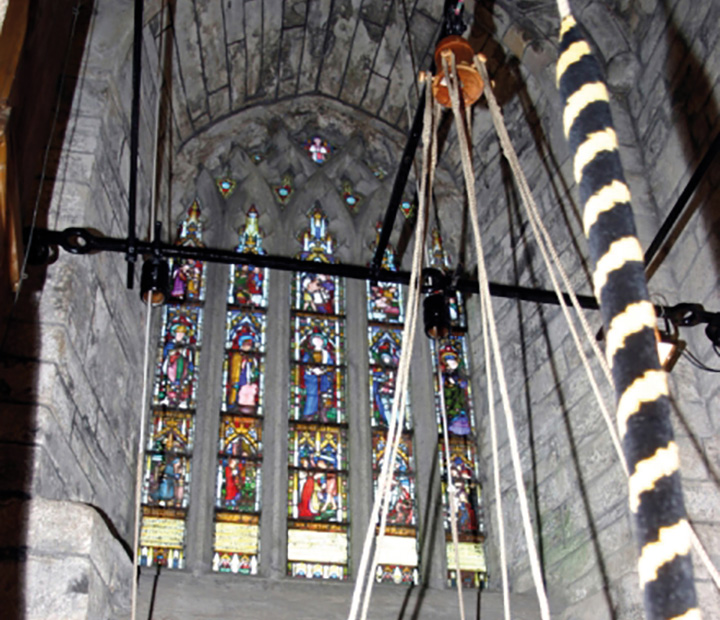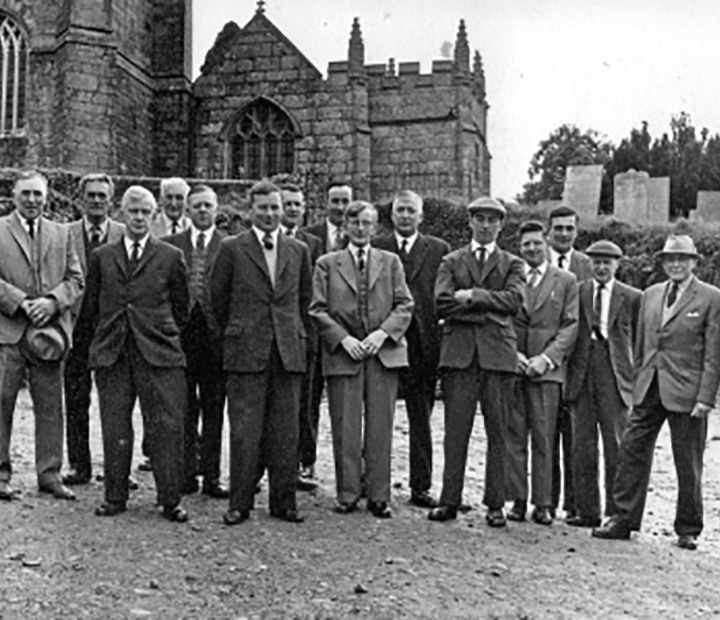Tower Captain: Roy Runnalls
Looking up the bell tower you can see another stone vaulted ceiling with transverse arches, this is unique amongst Cornish churches. There is a ring of six bells. The tenor bell weighs 8cwt and 7lbs. Each of the bells is inscribed with the bellfounders initials H.P, C.P, and W./P. The P stands for Pennington, they were a father and two sons. These are dated 1770. Bell number 4 is dedicated to John Gedye and the fifth to Stephen Henwood. The tenor bell has the names of William Morshead (a substantial landowner at the time) and Samuel Thomas who was the vicar 1756-1792. The second bell has the name John White gent and the fifth is inscribed to John Gedye and Stephen Henwood, both local men. The bells were turned, tuned and re-hung in 1975. There was a ringing floor until 1864 and a singing gallery facing into the church which was taken down when the "Grylls" window was installed. The latest addition is the screen with etched clear glass which has replaced the glass which did not show the glory of the window.
The clock commemorates the Diamond Jubilee of Queen Victoria 1897 and was made by J Smith & Sons of the Midland Clock Works Derby. The pendulum, housed in a wooden box structure, weighs 1 cwt, the striker 3 cwt and the chimes 3½ cwt. It is wound up twice a week. Although in 1611 a payment to the clockmaker for mending the clock is recorded no mention is made of a name. In 1622 an entry records the payment of one shilling to Christopher Kernicke "ffor one dais worke about the clock". We obviously had a clock then!
The Church Wardens account book for the period 1602 to 1709 informs us that a previous ring of bells was cast in 1611. These were cast on-site. Much detail is given regarding the money paid for a wide variety tasks. One entry reads "Itm (item) Pd (paid) Phillip Comb for ironworke about the tower 12s 3d. In Phillip Comb's will of 1633 he is described as "a blacksmith of St Neot". There were obviously bells already there as two further entries state "Itm Pd for bringing down the bell out of the tower 12d" & "Itm Pd for their dinner that did helpe to take him down at the same time 10d". Casting bells was hot and thirsty work, as is shown by the entry "Itm Pd for drinke at the casting of the bell 12d".



